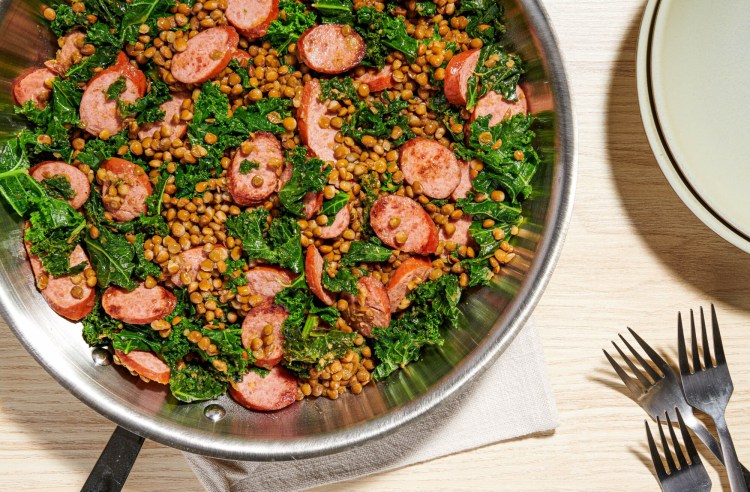When I imagined the first meal I would cook in my new house, I pictured a roasted chicken surrounded by vegetables bathed in its juices, a fresh green salad, a glass of wine and a simple, sumptuous apple cake.
Life, however, is full of twists and turns. And irony. Two days before the move, I tested positive for COVID.
Throughout this pandemic, our family took every precaution to avoid getting sick, but like millions of others, COVID found us at long last. The timing couldn’t have been worse.
(When I told my parents I had COVID, my mother, with an unusual-for-her wryness, quipped, “Remember when we were leaving Russia and you got chickenpox?” I guess timing has never been my strong suit.)
During the week of the move, aside from the relentless migraines, I felt somewhat OK. But once the weekend arrived, a deep fatigue set in. I’d start out the day with high hopes for all the boxes I would unpack, but by 2 p.m. I’d feel as if Dementors had sucked all the life out of my body, and I’d retreat to bed. On top of everything, the air conditioning in our new house broke.
Thanks to a gift card from my colleagues, we ate a lot of takeout. We also ate a lot of takeout leftovers. My new kitchen, just waiting for its inaugural meal, sat virtually untouched.
After a week, I decided I had to cook something. Anything. I knew that given my limited energy, the dish had to be simple yet delicious enough to create a warm memory of our first home-cooked meal in the new house.
In my heart, I felt like I was letting my tribe down. Didn’t my family deserve something truly magnificent and momentous? Yes. And yet here I was, about to make a meal with the least amount of effort required.
When my 7-year-old asked me what was for dinner that night, I smiled and said I was making the kielbasa-lentil-kale skillet, to which he exclaimed: “Yum! I love that dish so much!” (This is not the kind of enthusiasm my kid shows for many things.)
While I was feeling ho-hum about my low-effort cooking, my kid was positively levitating with joy.
You start out by browning kielbasa slices in the skillet, then toss in the lentils, stirring here and there, until warmed through. Then you add handfuls of chopped kale (this time I bought a bag of pre-chopped kale at the store and no, I’m not sorry), drizzle with apple cider vinegar and water to help season the mixture and wilt the kale, and cook for a few minutes more.
Call it cheating, call it semi-homemade – I call it delicious.
And here’s the best part: This ridiculously easy dish happens to be super-tasty, nutritionally sound and appealing to both grown-ups and kids. As my colleague Ann Maloney noted, “You could write this dish on a small scrap of paper in just a few sentences and hand it to me, and I’d know what to do.” Prep and cleanup are a cinch – something I’m especially grateful for given how much unpacking there’s still left to do. Plus, my top priority right now is resting more so I can heal faster.
There will be plenty of nights for elaborate, festive meals with family and friends, but for now, this humble skillet is more than enough. This is the kind of dish that’s so helpful to have in my back pocket.
Skillet Turkey Kielbasa With Lentils and Kale
20 minutes
4 servings (makes about 6 cups)
This skillet turkey kielbasa, lentil and kale dish is thrifty, tasty and requires minimal effort and time, making it a true weeknight dinner dream. The recipe is easy to adapt, too: Swap out kale for another hardy green, such as collards; use chicken, turkey or plant-based sausage in place of kielbasa; and try another vinegar, or even lemon juice instead of the apple cider vinegar.
Storage: Refrigerate leftovers for up to 3 days.
2 tablespoons olive oil, plus more as needed
One (12-ounce) turkey kielbasa, sliced 1/4-inch thick
Two (15-ounce) cans lentils, rinsed and drained (or 3 cups cooked brown lentils)
1 small bunch kale (5 ounces), stemmed and chopped
1/2 cup water, plus more as needed
1 1/2 tablespoons apple cider vinegar
Fine salt
Freshly ground black pepper
In a large skillet over medium-high heat, heat the oil until shimmering. Add the kielbasa and cook without moving until browned on the bottom, 2 to 3 minutes. Flip the pieces and cook until browned on another side, about 2 more minutes.
Decrease the heat to medium, add the lentils and stir to combine. Cook, stirring frequently, until the lentils are warmed through, about 2 minutes. Add the kale, water and vinegar, season to taste with salt and pepper (bearing in mind that kielbasa is salty and lentils may be, too) and cook, stirring frequently, until the kale has wilted some but still retains a green color, 2 to 3 minutes, adding more water if the mixture is looking dry.
Remove from the heat, divide among the plates or shallow bowls, and serve.
Nutrition information per serving (1 1/2 cups) | Calories: 423; Total Fat: 17 g; Saturated Fat: 3 g; Cholesterol: 75 mg; Sodium: 918 mg; Carbohydrates: 56 g; Dietary Fiber: 13 g; Sugar: 7 g; Protein: 30 g
Send questions/comments to the editors.



Comments are no longer available on this story